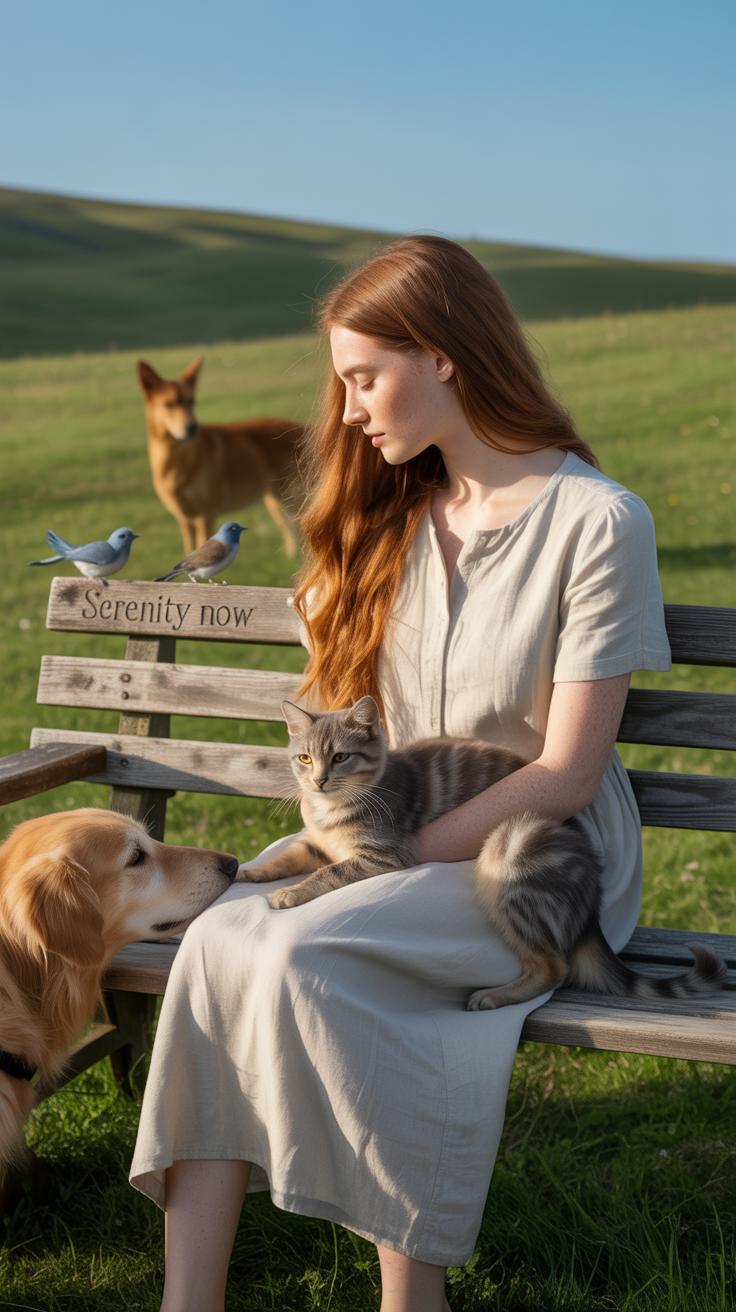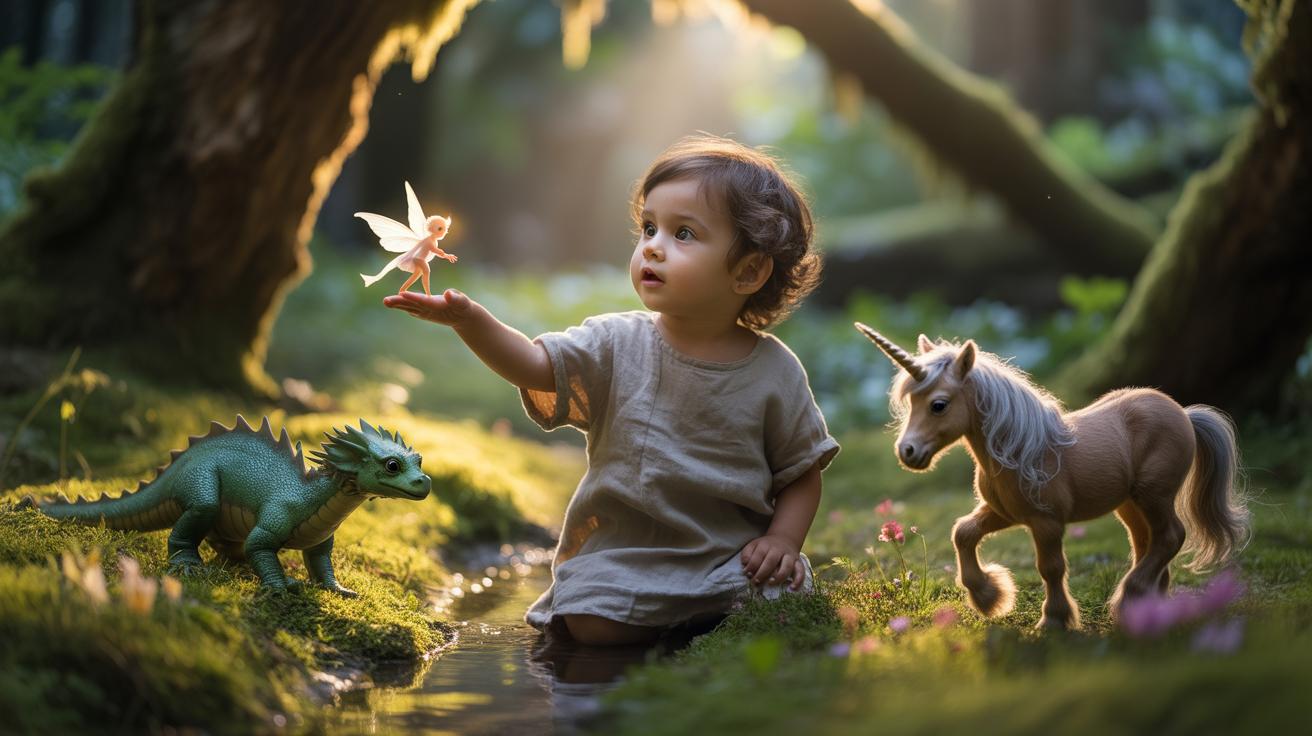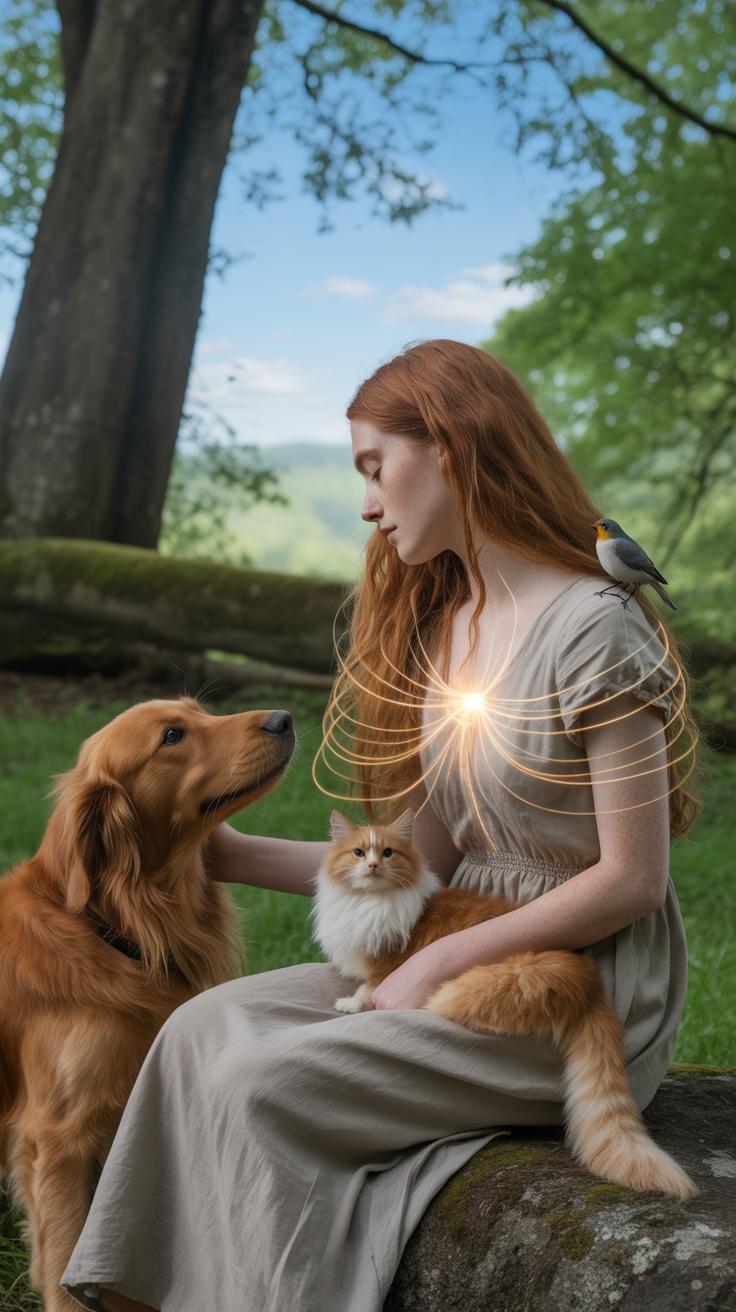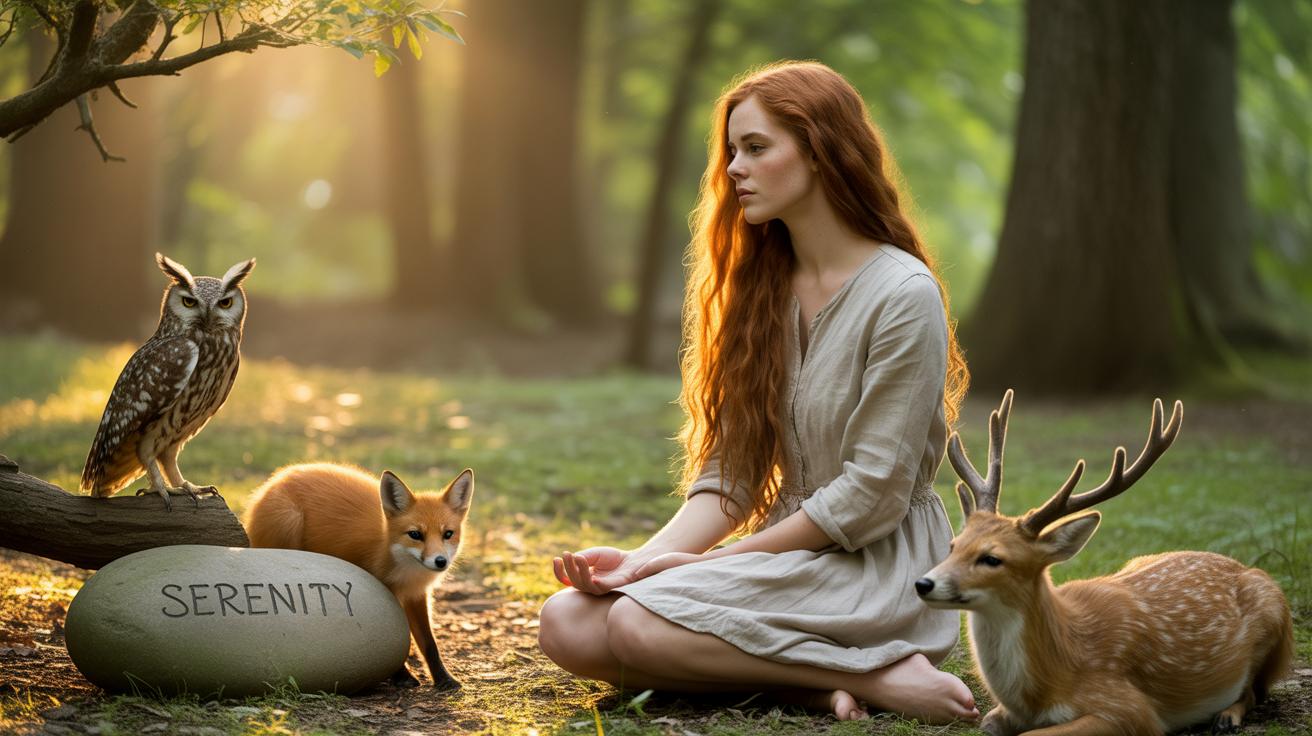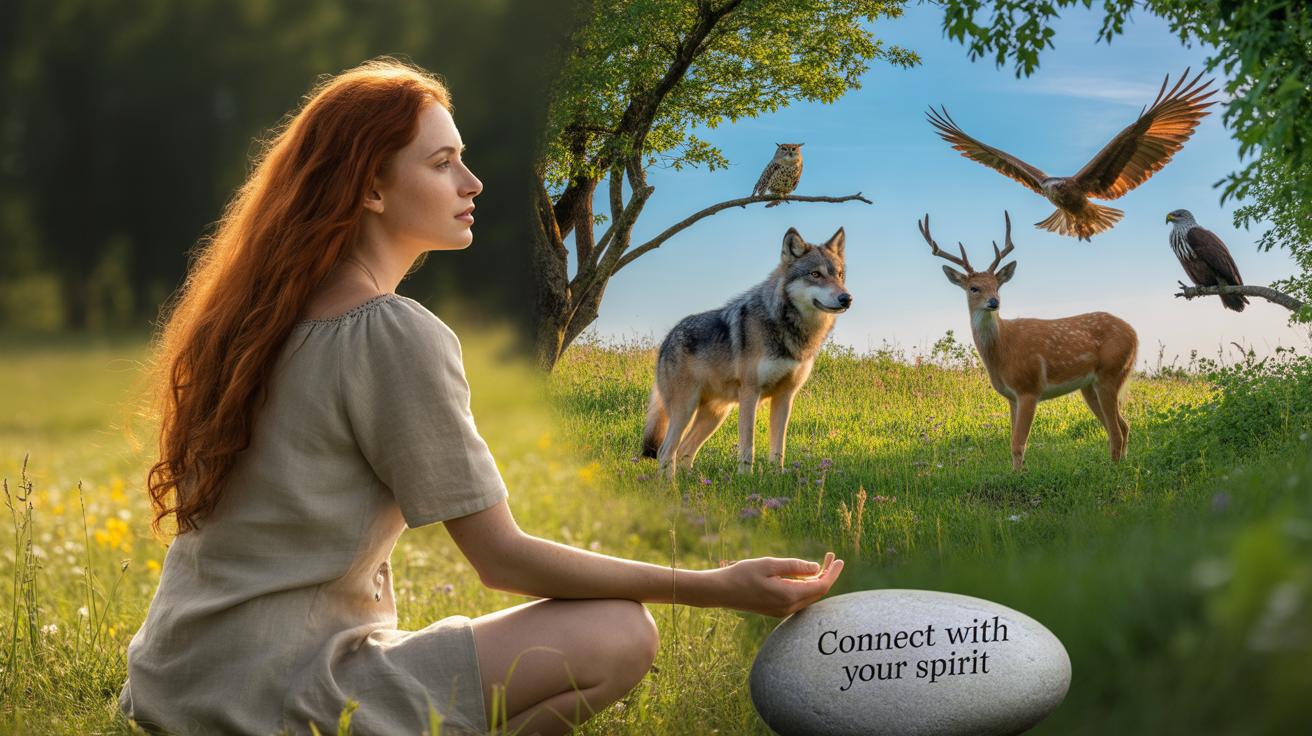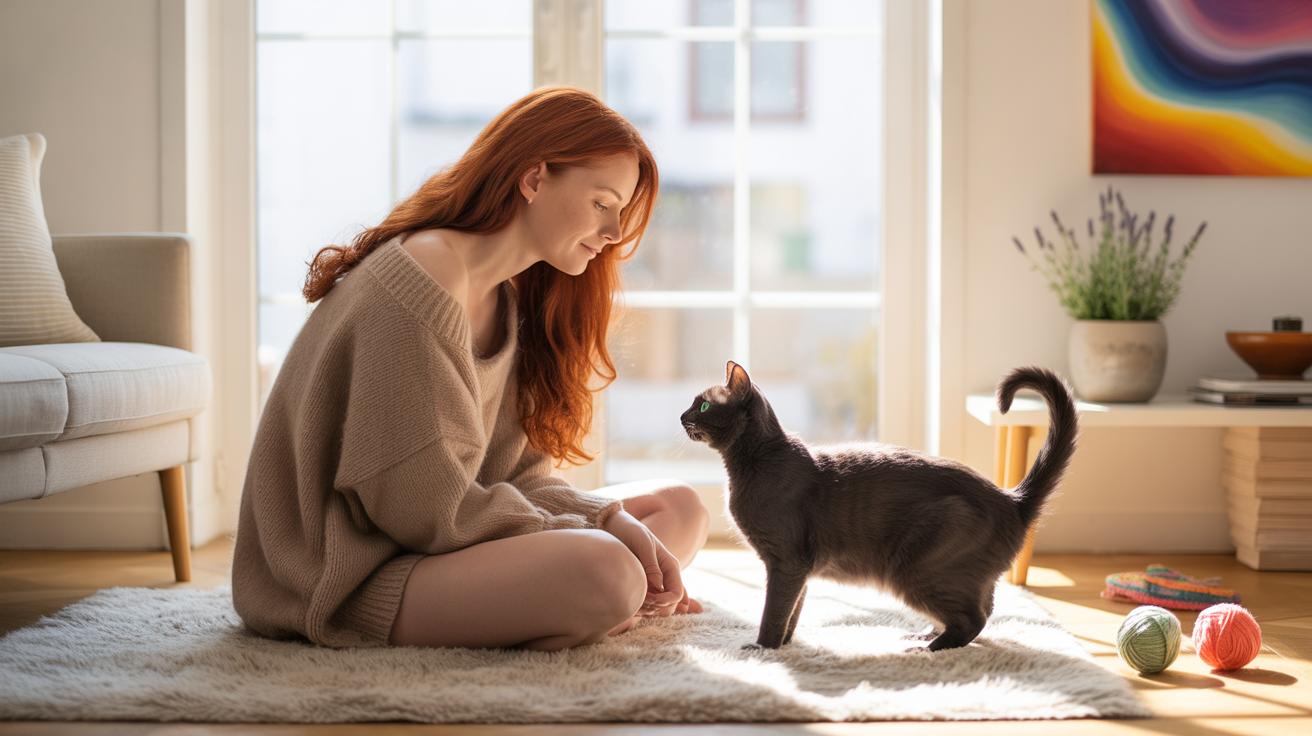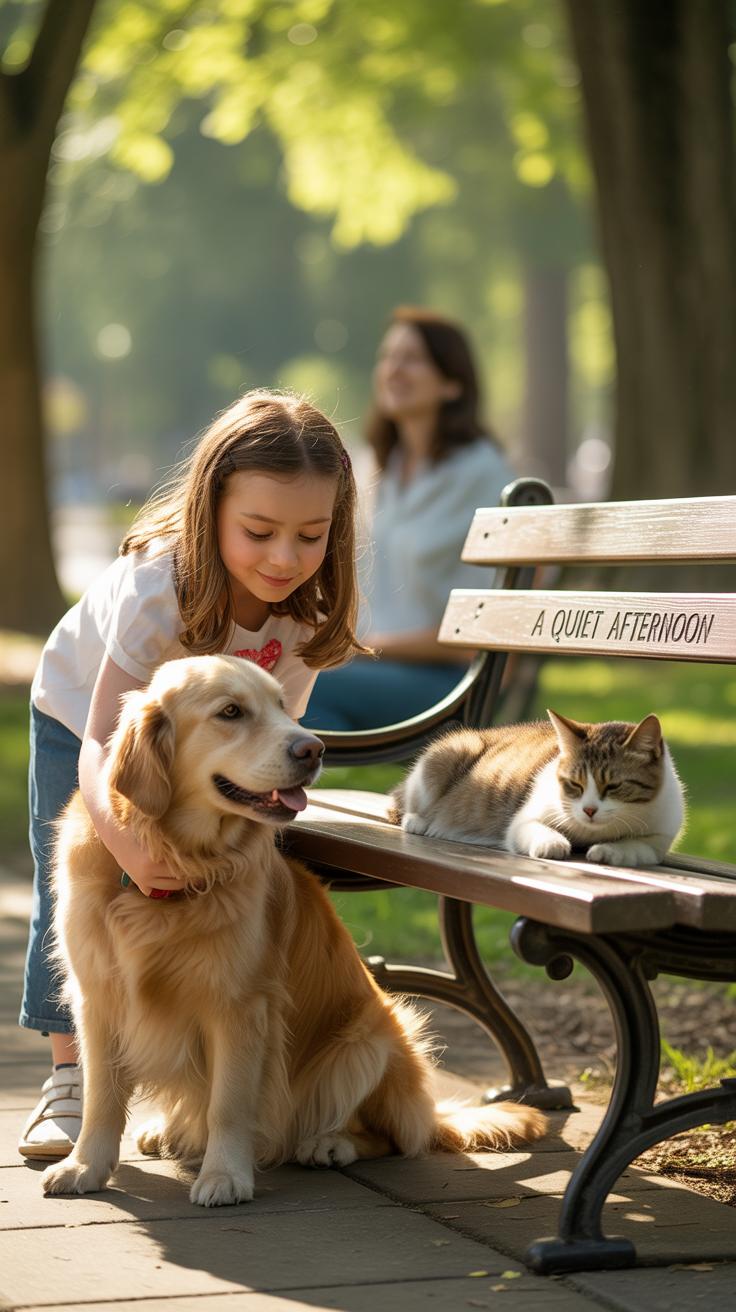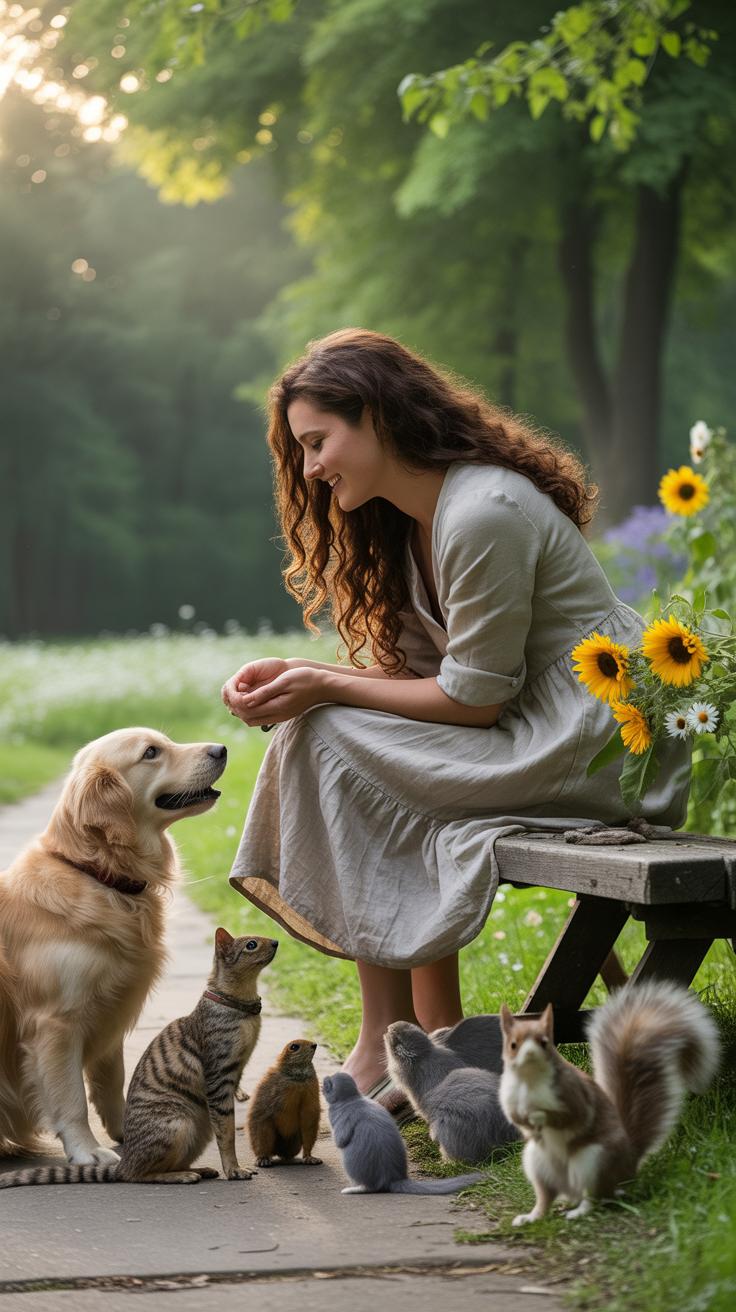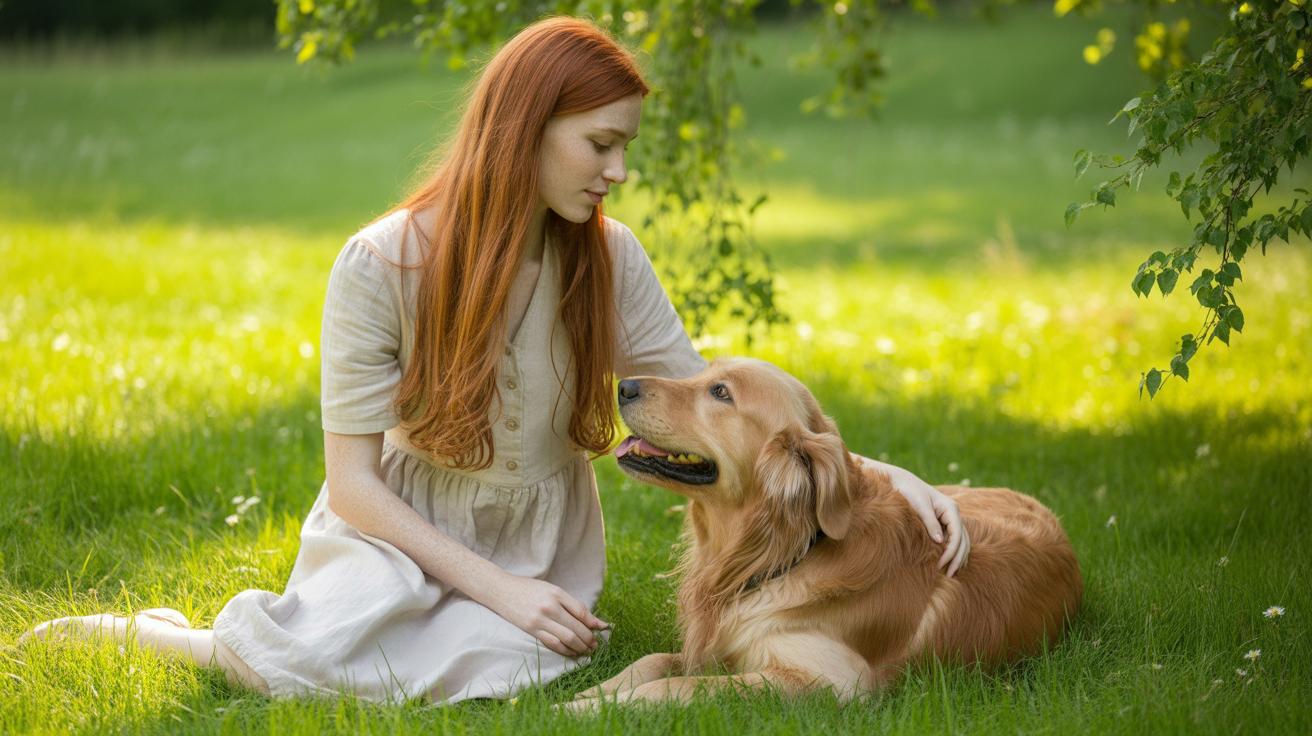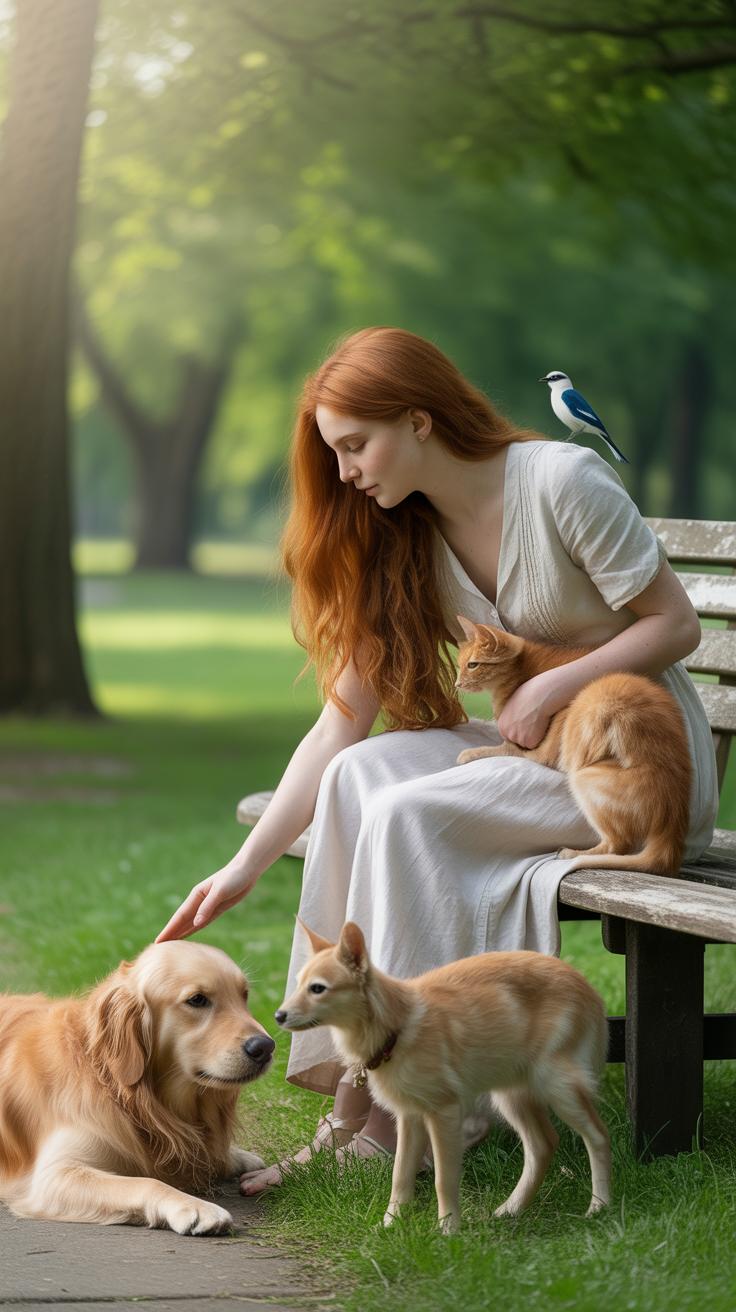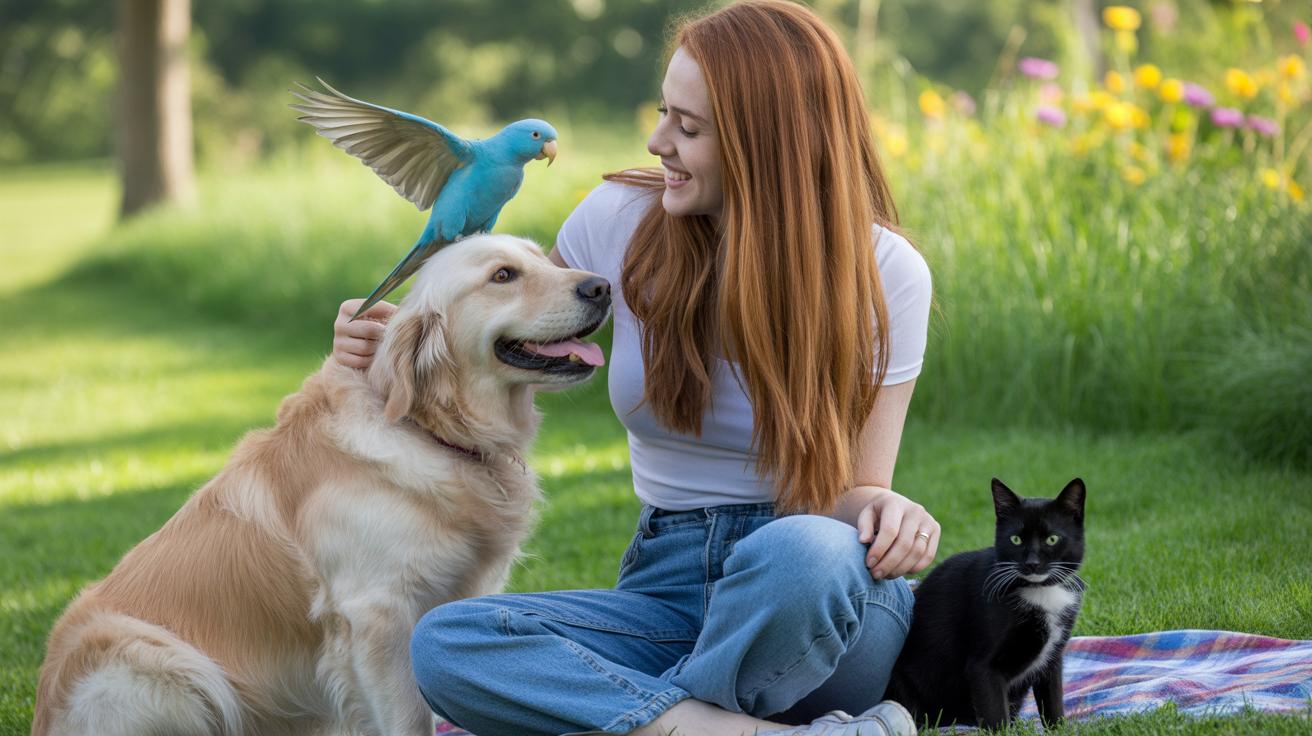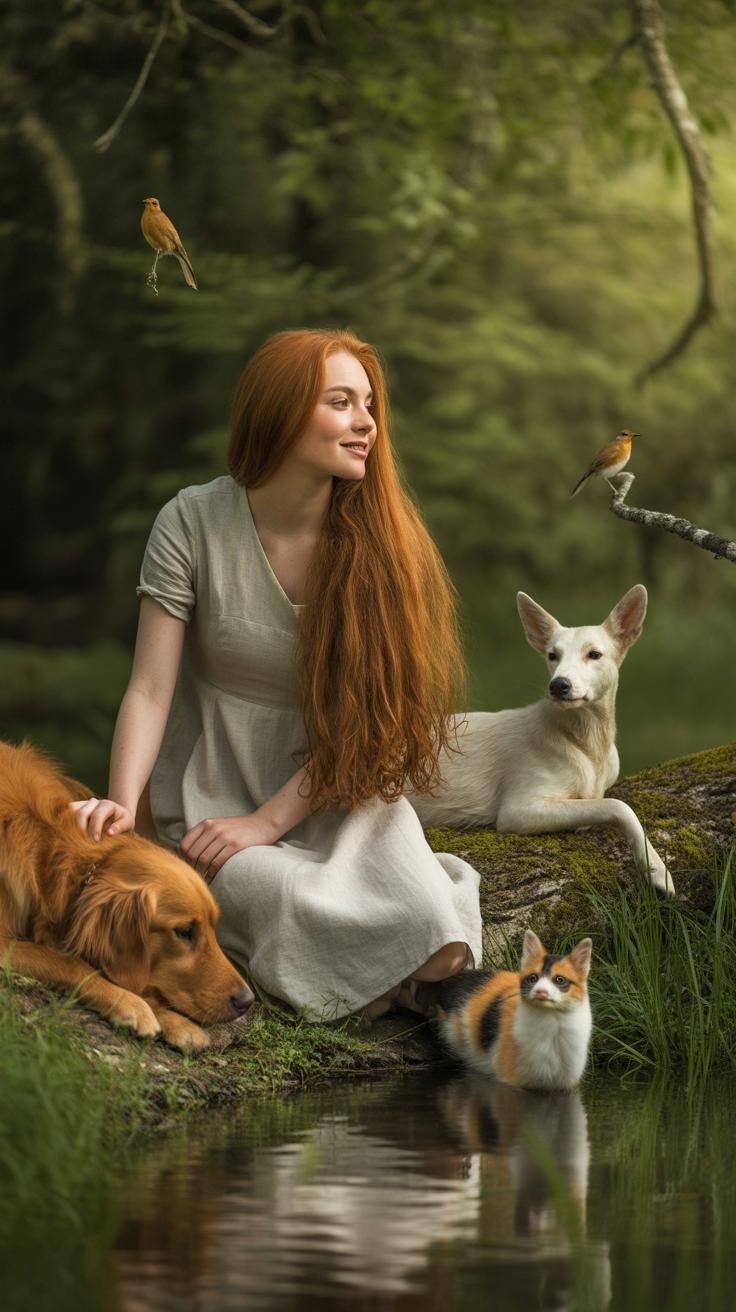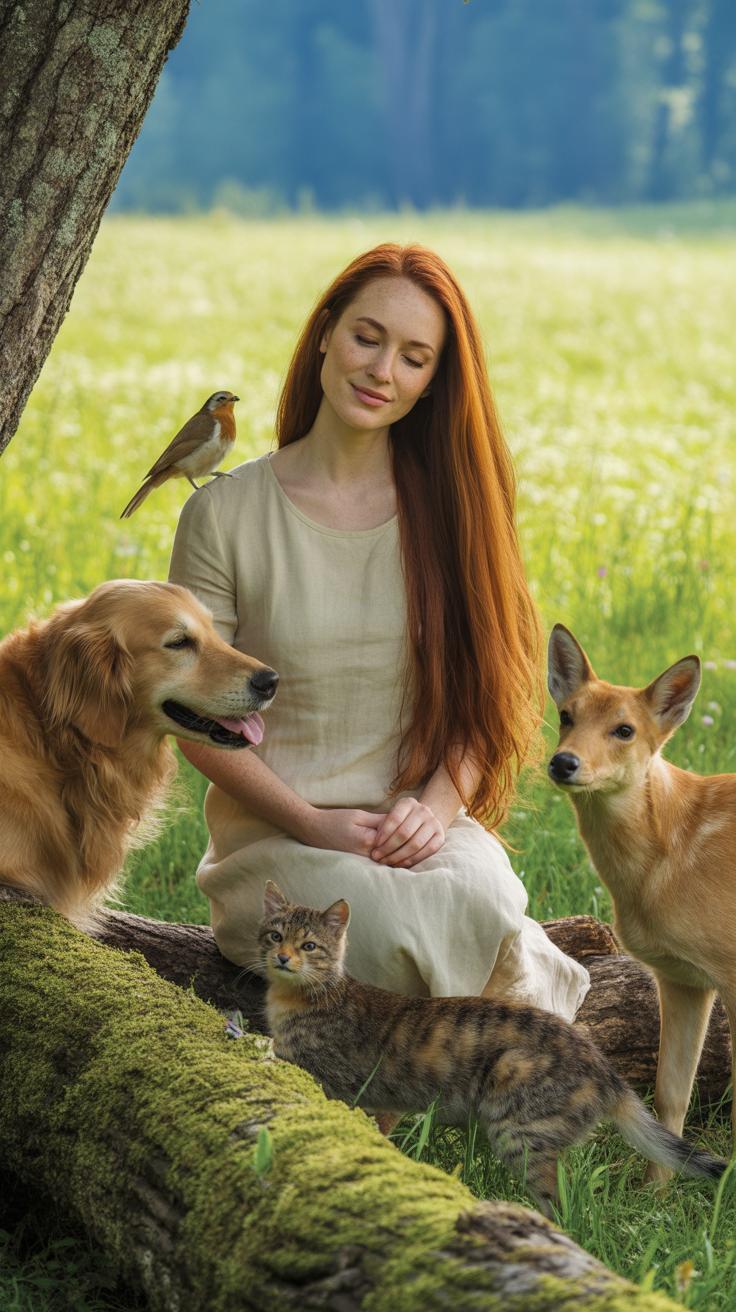Introduction
Being an intuitive empath means you naturally feel the emotions and energies around you. This gift extends beyond people and can open doors to better understanding animals. Animals communicate mostly through feelings and body language rather than words. If you learn to read these signals, you can deepen your bond and respond to their needs.
This article explores how you can use your feeling powers to understand animals better. We will look at what it means to be an intuitive empath, ways to sense animal emotions, and simple actions you can take to strengthen your connection. With these tips, you can create stronger, kinder relationships with the animals around you.
What Is an Intuitive Empath
What Is an Intuitive Empath
An intuitive empath is someone who naturally senses the feelings of others—not just through words, but through subtle signals that often go unnoticed. It’s like tuning into emotions the way others notice colors or sounds. You don’t have to try hard; you just *feel* what someone else is experiencing deeply, sometimes without them saying a thing.
These feelings come from observing tiny shifts in posture, facial expressions, or even the energy around a person or animal. It’s not just hearing words but sensing an emotional undercurrent beneath the surface. It might feel confusing at first because it’s more about empathy mixed with a kind of gut instinct. You pick up on moods and tensions the way you’d notice a change in the weather.
How Intuition Works for Empaths
Intuition works as your internal radar, capturing emotional signals before they become obvious. When you’re around someone—or even an animal—your mind quietly processes all sorts of cues. A slight hesitation, a change in breathing, or a sudden stillness triggers something in you. You might even “just know” something without logical proof.
This sense doesn’t depend on facts or spoken explanations. Instead, it builds on non-verbal hints and emotional energy fields. Sometimes it’s clear, other times fuzzy, like a puzzle missing a few pieces. You might trust it or doubt it, but it’s there, guiding you toward understanding feelings beyond surface communication.
Recognizing Empathic Signs in Yourself
Wondering if you’re an empath? Here are some signs that might feel familiar:
- Feeling drained or overwhelmed in crowded places—even if you don’t physically exert yourself.
- Picking up on others’ moods quickly, sometimes before they even say a word.
- Struggling to separate your emotions from those around you, often feeling like you carry others’ burdens.
- Being deeply affected by animals’ energy or distress, sensing when they’re uneasy or fearful without visible cues.
You might also notice that silence and solitude help you recharge, as the constant flood of emotions can be intense. At times, this sensitivity feels like a gift; other times, a burden. It can be confusing, but recognizing these feelings is the first step to directing your empathic ability toward meaningful connections—even with animals.
Why Animals Communicate Through Feelings
Animals don’t use words like we do. Instead, they lean heavily on feelings and body language to share what’s going on inside. That’s partly because they don’t have the same vocal structures or the need for complex language. But more than that, I think it reflects how they experience the world — much more directly and instinctively.
Feelings travel fast in their interactions. A quick tail wag or a subtle ear twitch can say a lot without noise. Words would slow things down, might even confuse. Emotions and movements give immediate, clear signals, especially when survival depends on it.
Animal Body Language Basics
Reading animal body language can feel a bit like tuning into a secret code. Here are some basics you might notice:
- Tail position: A high, wagging tail often means excitement or friendliness, while a tucked tail usually shows fear or submission.
- Ear movements: Forward ears indicate curiosity or alertness, and flattened ears might warn of irritation or stress.
- Posture: A relaxed body shows comfort; stiffness or raised hackles can mean tension or threat.
These signs can vary, and sometimes they overlap or seem contradictory depending on the animal’s personality or context. It’s an imperfect system, yet effective.
Feeling Animal Emotions Around You
As an intuitive empath, you probably notice how animals’ moods ripple into your own feelings. Maybe you feel calm just being near a sleeping dog, or uneasy if a cat is anxious. It’s not just imagining; animals genuinely influence your energy.
Pay close attention to how your own emotions shift when you’re with animals. If you suddenly feel restless or peaceful, ask yourself what the animal might be communicating. This awareness is a key way to sense what’s unspoken.
Sometimes, it’s confusing. You might catch sadness or excitement but not know its exact cause. That’s okay. Developing this sensitivity takes practice—and patience with the unclear signals.
How to Calm Your Mind to Tune Into Animals
Calming your mind feels easier said than done, especially when your thoughts race or emotions swirl. But to truly connect with animals, you need to quiet that noise. Imagine your mind as a still pond—only then can you catch the subtle ripples of an animal’s feelings. It might take practice, or maybe just a few moments of focused breathing.
Try these simple steps to settle yourself:
- Focus on your breath. Slow inhale, slow exhale. Count quietly if that helps.
- Bring your attention gently to the present. Notice sounds, smells, feelings around you without judgment.
- Let your thoughts drift by like clouds. Don’t hold onto them; just observe.
Staying peaceful allows you to open a clearer channel to the animal’s energy. Honestly, I find this trick of observing without interfering is harder than it sounds. But each time you practice, you get better at sensing emotions without getting tangled in your own.
Simple Mindfulness Steps for Empaths
Mindfulness is a natural tool for empaths. When you’re around animals, these few habits can keep your heart and mind balanced:
- Take a brief pause before engaging. A moment to check in with yourself makes a difference.
- Notice your body sensations—are your shoulders tense? Is your breath shallow? Relaxing these helps you stay open.
- Use grounding techniques, like feeling your feet on the earth or holding a smooth stone. This keeps your energy steady.
Try to maintain a quiet curiosity. Instead of trying to interpret everything at once, just be present. You don’t need to force understanding immediately—sometimes waiting is key.
Avoiding Overload of Feelings
Sometimes, the emotional impressions from animals or their surroundings flood in like a wave. It can be hard to tell which feelings belong to you and which belong to the animal—or even the environment. When that happens, stepping back is crucial.
Here’s how you might protect yourself from becoming overwhelmed:
- Imagine a subtle shield or barrier, not to block connection but to filter intensity.
- Remind yourself that you don’t have to carry every feeling. Feelings come and go; they aren’t permanent.
- Set time limits for deep empathic sessions. Even ten minutes can be draining.
On some days, I’ve noticed that despite all efforts, emotions get tangled. And that’s okay. Sometimes, you just need to pause, breathe, and return to your own center before trying again.
Observing Animals to Understand Their Feelings
Noticing Small Changes in Behavior
When you watch an animal closely, you start picking up on tiny shifts that suggest what they might be feeling. It could be something as subtle as the flick of a cat’s ear, the brief pause before a dog wags its tail, or a slight change in posture. These small signals often go unnoticed, but they’re clues. For example, a horse’s lowered head might show relaxation, while a quick glance sideways could indicate unease. I’ve noticed that even the way a bird ruffles its feathers can hint at tension or contentment. It’s not always obvious, and sometimes you may not be sure what to make of it right away, but observing these fine details builds your sense of their emotional world.
Using Observation to Improve Communication
Paying attention like this changes how you respond. If you see an animal stiffen or retreat, you naturally become gentler or give them space. Watching also helps you spot moments when they’re open and willing to connect—maybe when a dog’s eyes soften or a rabbit starts sniffing nearby. By tuning in, you avoid pushing too hard or misreading signals that could cause stress. In my experience, this careful observation deepens the relationship without needing words. It’s almost like learning a new language—only slower to understand, and sometimes confusing, but each small insight makes your bond a bit stronger. Can you think of a time when simply watching made a difference in how you connected with an animal?
Practicing Empathy With Pets and Wildlife
Connecting Deeply With Your Pet
To build empathy with your pet, start by tuning in not just to their actions, but their subtle signals—the way their ears move, their breathing changes. This goes beyond simple petting. Try sitting quietly beside them, letting them come close on their terms. Watch what they prefer—soft touches or a gentle voice—and adjust. A dog might like eye contact; a cat might prefer a slow blink from you instead.
Consistency matters. Feed them gently, speak kindly, and respect their boundaries. Even routine care like brushing fur slowly and attentively conveys that you’re paying attention to their experience. Over time, you might notice small shifts—a relaxed tail, a nuzzle—that show growing trust. It’s a slow process, sometimes frustrating because pets don’t always respond predictably. But trust often grows from these small, regular moments.
Respectful Approaches to Wild Animals
When you encounter wildlife, empathy means appreciating without interfering. That’s tricky. You want to connect but also respect their space. Observe quietly from a distance and avoid sudden moves. Notice their routines—when they eat, rest, or move on—and don’t change those patterns just because you’re present.
Imagine what it feels like for them to notice you. Does your presence cause stress? Sometimes animals freeze or flee, and that’s a clue. Stay still, breathe evenly, and lower your profile rather than approaching directly. Empathy here is about recognizing their needs without acting on your own impulse to get closer. You’re a guest in their world, not the other way round.
Maybe next time, you’ll try just watching for a little longer. What can you learn by holding back rather than reaching out? Sometimes, the greatest connection is silence.
Using Your Empath Skills to Help Animal Wellbeing
Noticing Signs of Animal Stress or Discomfort
As an intuitive empath, you might find yourself picking up on subtle shifts in an animal’s mood or health even before obvious signs show up. Sometimes it’s a slight drop in energy, a change in breathing, or a glance that seems off. You don’t always get a clear message—maybe just a vague unease or an unsettled feeling—but that can be enough to prompt a closer look.
Animals can’t always tell us when they’re sick or anxious. Your empathic awareness helps bridge that gap. For example, I once noticed a familiar tension around my dog’s chest, something I didn’t see with others. It turned out she was developing an early respiratory issue. Sometimes, your gut feeling is more than intuition; it’s a kind of early warning system. You’ll catch some signals others miss, if you’re paying attention. Still, it’s tricky because not every uneasy feeling means something is wrong.
Providing Support Through Calm Presence
Your calmness matters. When animals feel anxious or unwell, your quiet, steady energy helps them relax. It’s not just about being there. It’s how you are present—soft, patient, and gentle. This presence can slow down their racing thoughts or discomfort. I’ve seen a restless cat gradually settle down simply because someone stayed calm nearby, without pushing or forcing interaction.
Sometimes the best help isn’t fixing a problem immediately but offering a safe space through your presence. Your empathy lets animals sense they’re understood and not alone. This can actually influence their recovery, offering emotional relief that makes a difference physically. While it might not be instant or dramatic, your consistent calm energy is often what animals need most in difficult moments.
Building a Routine for Empathic Animal Connection
Creating habits that strengthen your empathic bond with animals takes time and intention. You don’t have to schedule hours every day—small consistent moments can make a real difference. Try setting aside a quiet window, maybe just ten or fifteen minutes, where you watch animals without distractions. It could be your pet, birds outside the window, or even neighborhood squirrels. The key is to simply observe, without trying to interpret their behavior right away. Notice their subtle movements, their expressions. Let your feelings rise naturally.
Journaling can deepen this connection in ways you might not expect. Writing down what you sense or feel during these quiet times trains your mind to pick up on subtle cues. You don’t need fancy words. Just be honest and open about what you notice, what emotions come up, or even what confuses you. Over time, this record becomes a personal guide for tuning in better. It’s like… tracking your progress, but also giving space for reflection and surprises. You might find your insights evolving in ways you hadn’t planned.
Perhaps the most valuable part is how these practices slowly build trust between you and the animals. Trust that you’re paying attention, that you care. And in that trust, your empathic sense can grow, blossom even, in quiet, everyday moments.
Common Challenges for Intuitive Empaths With Animals
Working with animals as an intuitive empath can feel like walking a tightrope. Their feelings don’t always present themselves clearly. Sometimes you might pick up emotions that shift too fast or seem contradictory. One moment, an animal might feel calm; the next, anxious—or maybe it’s a mixed signal altogether. When that happens, try to pause instead of rushing to interpret. You could ask yourself, “Is this how the animal really feels, or is it my own projection creeping in?” Taking a deep breath and focusing on simple observations, like body language, often helps untangle the fuzziness.
Another tricky part is managing your own emotional space. Animals’ feelings can flood in, and if you don’t set boundaries, it can get overwhelming. I find that gently reminding myself that I’m not responsible for their emotions creates a small but crucial distance. If you feel drained after connecting, it’s okay to step back, recharge, and return later. Some empaths struggle with guilt when they pull away, but maintaining your limits actually makes your connection stronger—not weaker.
Think about moments when you’ve felt pulled every which way by an animal’s vibe. What strategies helped you stay steady? Sometimes, just recognizing the challenge is the first step toward handling it better next time.
Growing Your Intuitive Empath Skills Over Time
Building your empathic connection with animals doesn’t happen all at once. It takes ongoing practice and kind of… trial and error. Each encounter offers a chance to learn—but only if you pay attention. Maybe a dog’s subtle tail twitch confused you last week. Next time, you might notice the difference between nervousness and curiosity more clearly.
Think of each animal interaction as a quiet lesson. Some days, you’ll miss cues or misunderstand feelings—and that’s okay. These moments can teach you what to observe next time, what to trust or question within your own feelings.
Look for support that fits you. Books written by intuitive empaths, small groups focused on animal communication, or mentors who’ve walked this path before—these resources can offer guidance or new ways to practice. Sometimes hearing another person’s experience sparks recognition or fresh insight.
- Practice regularly, even with familiar animals to notice subtle shifts.
- Reflect on what you sensed versus what the animal showed through behavior.
- Create a journal to track your experiences and feelings.
- Find community—whether online or in person—to share and learn.
Will your empath abilities grow steadily or in fits and starts? That’s hard to say. The important part is keeping at it, with gentle patience for yourself and the animals you’re learning from.
Conclusions
Understanding animals through your empathic abilities lets you build trust and care in new ways. You learn to notice their feelings, needs, and moods even when they cannot speak. This skill grows stronger when you practice observing and quietly tuning in.
Using your feeling powers helps you be calm and present with animals. This respect and attention bring you closer to them. Keep being curious and gentle as you explore the special ways animals express themselves through emotions.


